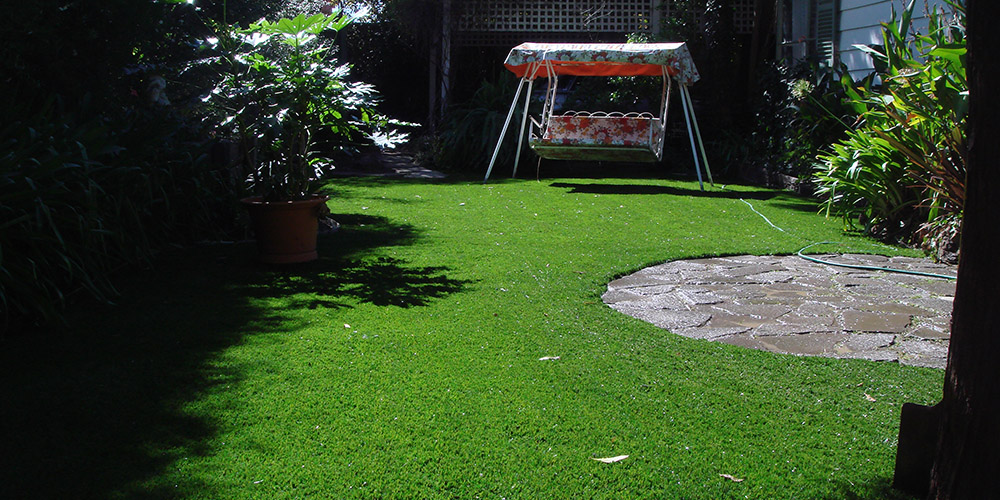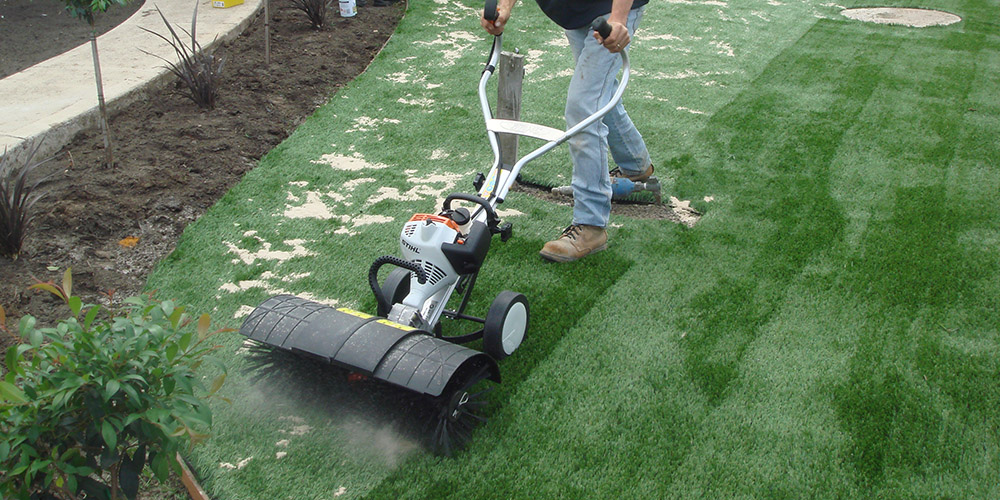Most people today prefer to install their fake grass gardens themselves, which is why we thought of writing this comprehensive DIY guide.
With the proper equipment and high-quality materials, the processes are simple, but the joins—the most challenging to conceal—are where most people struggle.
How to Cover Joins in Synthetic Grass
You can begin laying new turf once you’ve removed the old, laid a subbase, installed a weed membrane, and mowed your lawn to size.
The crucial step for avoiding the joins is to do the following once you have prepped your surface, smoothed it out, laid your geotextile, and cut your rolls to the appropriate size for your garden:
Grain Direction
To prevent joins, you must first examine the piles’ direction. When laying your grass rolls, make sure the piles (or yarns) are all facing the same way. The outcomes would be smoother and more attractive.
Cut Three Stitches From the Edge
You should remove the manufacturer’s edge strip from both pieces of lawn, three stitches from each edge, after making sure your rolls are facing the same way.
In addition to eliminating the strip, the two parts can sit flush next to one another because most of the backing at the lawn’s edge will be removed.
You must ensure that the gap between the two rolls of artificial grass when you link them together is the same size as the stitch gauge (the space between the stitches of the grass itself).
Use nails to stop the grass from moving to maintain the right gap between the rolls and the edge distance.

Cut Through the Stitches
Cutting must be done carefully. If you cut from the stitches, the yarns will come loose from the roll, which could result in an empty line later on, which wouldn’t look nice. The rolls will be synchronized before you use glue to attach them.
Seam the Rolls with Glue
Make sure the roll distances are evenly spread on top of the seaming tape before adhering the rolls together. They should meet in the center.
You should use nails after placing the rolls since they will stop the grass from shifting and affecting where they are placed.
You must ensure that you have folded back the appropriate amount of grass before adding the glue and seaming tape.
Glue the Grass
The next step would be repositioning the folded bits of grass from the previous phase. Because this is a crucial step, we advise you do it carefully by yourself. Or you can get consult from the artificial turf factory about this before installation. To prevent any other defective looks from any side of the grass, one person should place the folded side, and the other should make sure that the rolls are straight. Additionally, keep the space between the two rolls to a minimum.
It’s crucial to take your time and give this step much thought. Rushing could result in uneven surfaces.
Final Touch – Brushing
The last step to creating an attractive artificial grass garden is to spread the infill that you used (silica sand, EPDM, or sbr) with a decent brushing machine. This will ensure that the infill is evenly distributed throughout the garden. If you did so, your joins would appear to be one continuous roll.
